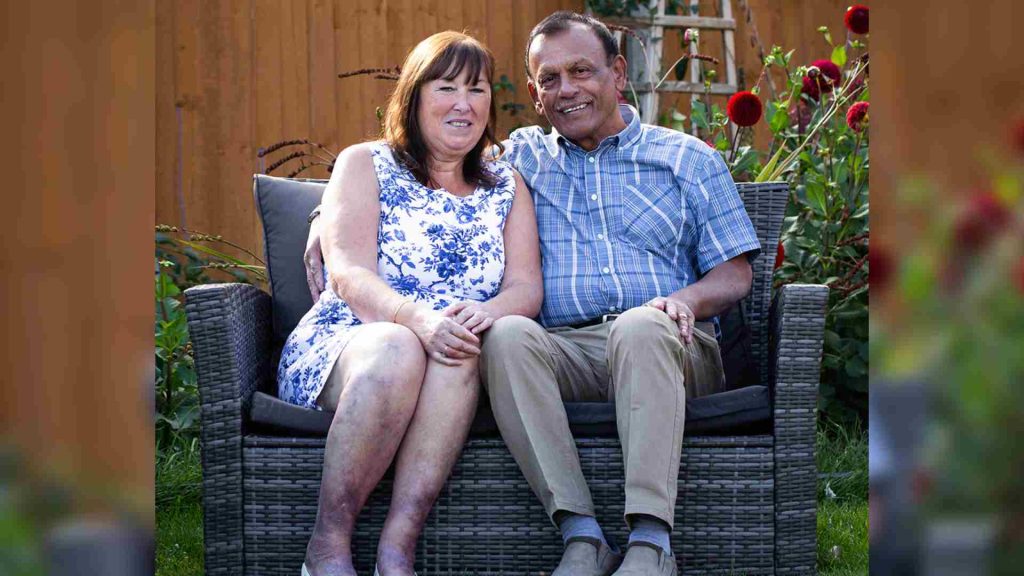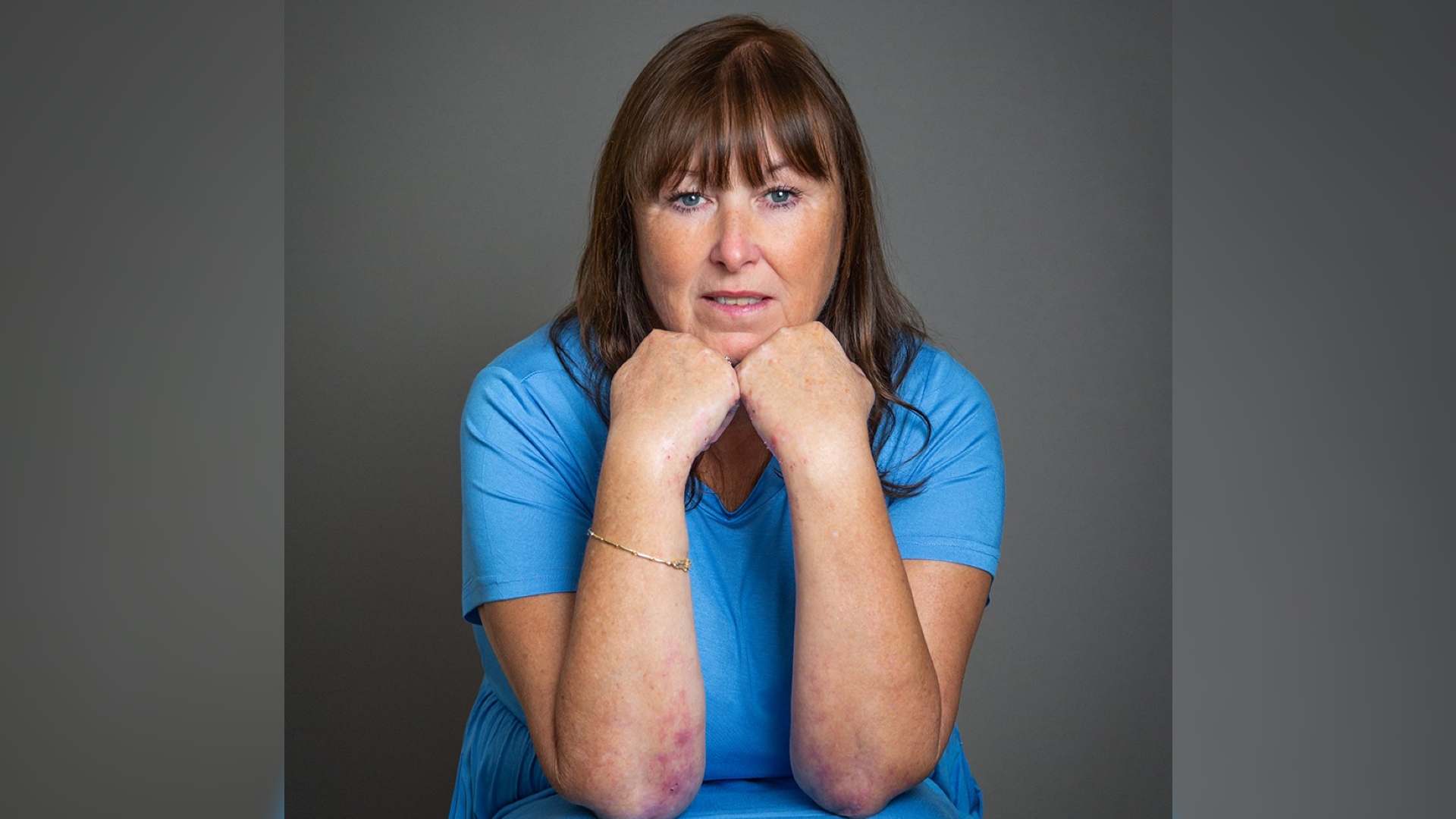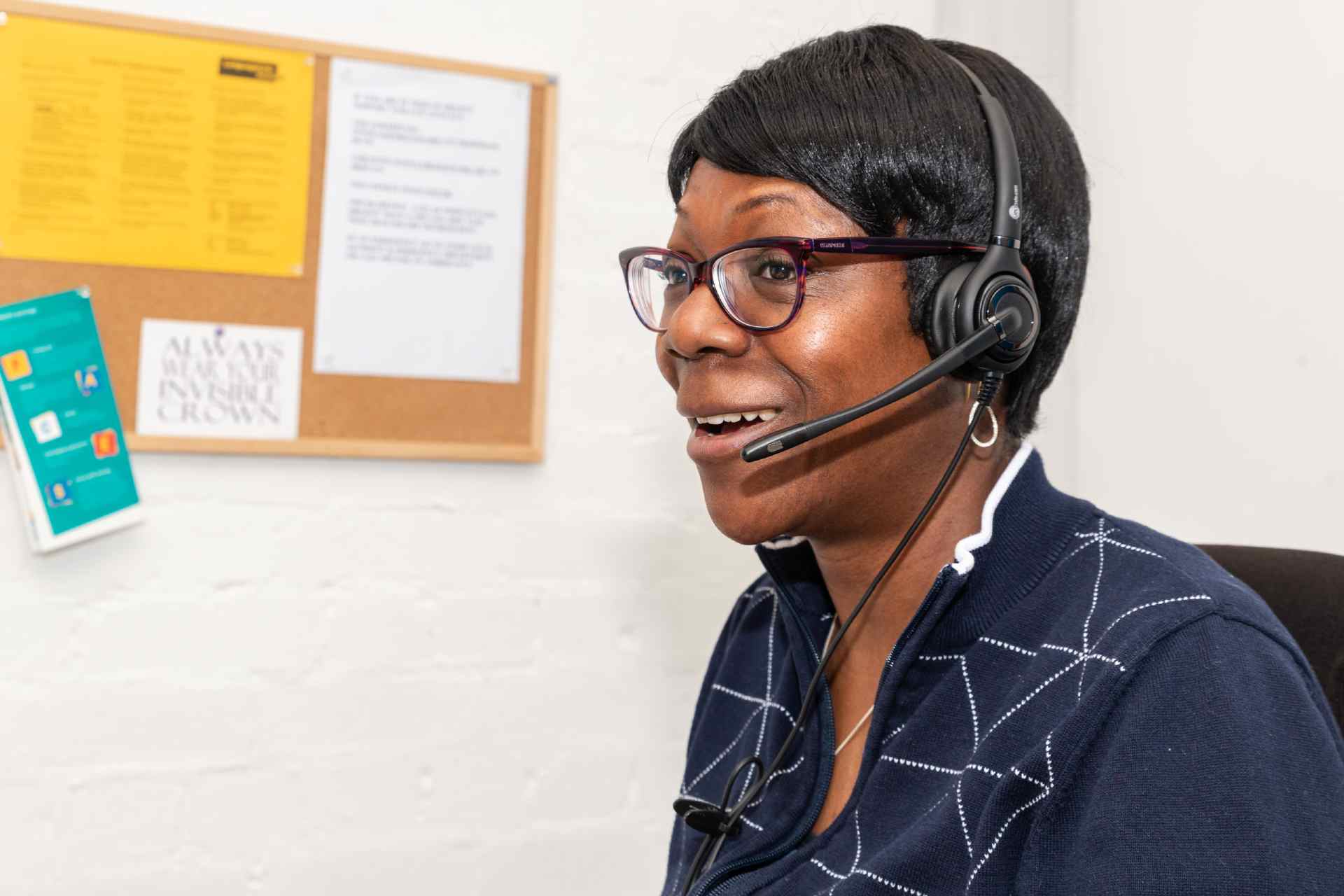My name is Joanne, and I have dystrophic epidermolysis bullosa (DEB). DEB is caused by a genetic mutation and means my skin tears or blisters at the slightest touch. EB is also known as ‘butterfly skin’.
EB is in my very first memory. I was four years old and sitting on the concrete floor in the backyard of our house, heavily bandaged with a butterfly perched on my big toe. How strange that this memory is so vivid since the butterfly has since become so synonymous with EB.
The condition has been with me ever since. Some things have changed – thankfully the quality of dressings has improved now – but pain is the constant.
I remember falling over and losing the skin from my hands, my face, my legs, and my elbows. I remember the painful process of digging out the grit and dirt that had become imbedded in my wounds.
Meeting other people with EB who I can talk to and share ideas with, without feeling the shame I carried as a child, has really helped me.
It wasn’t just the physical pain that was difficult to cope with. I also remember the cruelty and bullying I experienced at school; “scabby” was a popular nickname directed at me.
I was treated differently but I didn’t want to be different. Feeling constantly rejected and misunderstood by those around me was extremely challenging.
My family explored faith healers and Chinese medicine for a remedy for my condition and the pain, but nothing could take it away.
I haven’t let EB define who I am though. I was told as a child that I couldn’t dance, so when I was in my twenties, I took tap dancing lessons, despite the extreme pain that it entailed. I was told I shouldn’t work with children, but I became a metalwork and woodwork design technology teacher because I found helping others to be a huge release. I have travelled the world, and lived in the USA, Cyprus, UAE, and Malaysia.

Joanne’s EB doesn’t stop her from living life to the fullest
I also learned how to scuba dive, sail, and drive a huge combine harvester. I am now a Neurodiversity Specialist and assessor with the Royal Navy, helping service people progress through their studies and career.
Throughout my life there has always been a lack of awareness and understanding of my condition. I was incorrectly told by the doctor that my unborn child wouldn’t have EB because it couldn’t be passed on. Neither of my two children, nor three grandchildren do have EB, but it is a genetic condition. A dermatologist also asked me how I caught EB. You don’t catch EB!
Finding DEBRA, the EB charity, and meeting other people with EB who I can talk to and share ideas with, without feeling the shame I carried as a child, has really helped me. The condition has scarred me both mentally and physically, and damaged many of my relationships, but I’ve kept going thanks to the support I’ve found.
In the future, I hope people with EB, and others with visible differences, get access to the support that they need early on, because people shouldn’t have to live in physical or emotional turmoil for something they can’t control.

